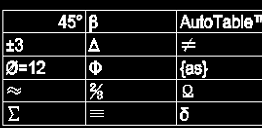The world expands with 18 new geoparks designated by UNESCO
In the mid-1990s, the term Geopark began to be used, arising from the need to protect, conserve and revalue areas of great geological importance. These are important since they are a reflection of the evolutionary processes that the planet earth has gone through.
By the year 2015, the term UNESCO World Geopark, adding for this date the need to recognize the geological heritage worldwide, combining conservation, public disclosure and sustainable development approach.
“With the 18 new designations, the UNESCO Global Geoparks Network now has 195 geoparks, covering a total area of 486 km709, equivalent to twice the size of the UK.”
UNESCO has recently designated 18 new Global Geoparks for conservation and protection. These geoparks are found in different parts of the world, characterized by having great geological or geomorphological diversity, impressive landscapes, and historical or cultural relevance.
The growing list of world Geoparks demonstrates the current global commitment to the conservation of natural and cultural heritage. All these places promote research and sustainable and intelligent tourism. Firstly, because they are active and dynamic areas that all communities can take advantage of to obtain benefits.
Scientists, academics, and students from all branches of science help raise awareness with their investigations of our resources and the diversity of all species found there. These can be considered yet another reason to see the world's natural treasures and learn about the earth's natural history. Another reason to see the world's natural treasures and learn about the earth's natural history are compelling reasons to explore the world.
“The UNESCO Executive Board has approved the designation of 18 new Global Geoparks, bringing the total number of UNESCO Global Geoparks Network sites to 195, spread over 48 countries. Two UNESCO Member States join the Network with their first geoparks: the Philippines and New Zealand.”
The list of the new Geoparks is the following:
1. Brazil: Caçapava UNESCO Global Geopark
Described as “the place where the jungle ends”, it is located in the State of Rio Grande do Sul in the extreme south of Brazil. It was chosen with the connotation of Geopark for its geological heritage, mainly made up of metals and sulphide marble, in addition to finding sediments of volcanic origin from the Ediacaran period. In addition to marveling at its landscapes of bushes, pastures and agricultural areas.
2. Brazil: Quarta Colônia UNESCO Global Geopark
It is a Geopark that has traces of indigenous settlements dating back hundreds of years, and also has a wide variety of fossil fauna and flora of more than 230 million years.
3. Spain: Cape Ortegal UNESCO Global Geopark
It is considered as one of the places that shows the transformation process of Pangea. It is rich in copper, thanks to this mines originated that have been exploited throughout its existence.
4. Philippines: Bohol Island UNESCO Global Geopark
Located in the Visayas archipelago, it is characterized by having many karstic formations, such as the so-called Chocolate Hills. There you can find a double barrier reef from Danajon that offers the visitor a spectacle of 600 years of coral growth.
5. Greece: Lavreotiki UNESCO Global Geopark
In the Lavreotiki Geopark there is a great variety of mineralogical formations and mixed deposits of sulphide minerals. In addition to housing the Monastery of San Pablo Apóstol.
6. Indonesia: Ijen UNESCO Global Geopark
It is situated in the regencies of Banyuwangi and Bondowoso – East Java. Ijen is one of the most active volcanoes, its crater lake the most acidic on Earth and the largest of its kind. In this you can see large concentrations of sulfur rising to the active crater that after coming into contact with the atmosphere produces a blue flame.

7. Indonesia: Maros Pangkep UNESCO Global Geopark
It is an area that encompasses a group of 39 islands. It is located in the Coral Triangle and is a center for the conservation of coral reef ecosystems. It houses several endemic species such as: the black macaque and the couscous.
8. Indonesia: Merangin Jambi UNESCO Global Geopark
In this Geopark are the fossils of the "Jambi Flora", so called to refer to fossilized plants dating from the early Permian era, and several areas of karstic landscape. It is also home to several indigenous communities.
9. Indonesia: Raja Ampat UNESCO Global Geopark
It is an area that includes 4 islands, and has the oldest exposed rock set in the country with more than 400 million years. You can see limestone karst landscapes that turn into beautiful caves.

10. Iran: Aras UNESCO Global Geopark
Located in the northeast of Iran, it brings together a great biodiversity with endangered animal species. The reason why it was included in this list is the traces of the mass extinction that occurred millions of years ago.
11. Iran: Tabas UNESCO Global Geopark
This geopark is home to half of the world's habitat for an endemic plant called Ferula assa-foetida, used for medicinal purposes. It attracts many researchers and tourists for its beautiful landscapes and its valuable natural heritage.

12. Japan: Hakusan Tedorigawa UNESCO Global Geopark
Hakusan Tedorigawa Geopark has approximately 300 million years of history, known as one of the three sacred mountains. The history of the geopark dates back at least 300 million years. With a large number of volcanic deposits, such as those of Mount Hakusan and a large record of snowfall.
13. Malaysia: Kinabalu UNESCO Global Geopark
It is the highest mountain in the Himalayas, where there are numerous species of plants and animals, as well as granitic intrusions, igneous rocks and ultramafic rocks dating back billions of years.
14. New Zealand: Waitaki Whitestone UNESCO Global Geopark
It is located on the eastern coast of the South Island, it is a place highly appreciated by the indigenous people of the area, as well as being proof of the formation of Zealand.
15. Norway: Sunnhordland UNESCO Global Geopark
It is a place with incredible landscapes of alpine mountains and glaciers, and evidence of how volcanic systems build continents. There converge two tectonic plates and one of the orogenic belts of the earth.
16. Republic of Korea: Jeonbuk West Coast UNESCO Global Geopark
It is an area with millions of years of geological history. In this area of tidal flats or Getbol -in Korean-, it is made up of extremely thick tidal sediment layers and rich in Holocene sediments. It is a World Heritage Site and a Biosphere Reserve.

17. Thailand: Khorat UNESCO Global Geopark
This park is located in the Lam Takhong River basin, with deciduous dipterocarp forests, an abundance of fossils between 16 and 10.000 billion years old. Dinosaur fossils, petrified wood and other elements of high value to humanity have been found.
18. United Kingdom of Great Britain and Northern Ireland
Morne Gullion Strangford UNESCO Global Geopark: It is evidence of the evolution of the oceans, specifically the birth of the Atlantic Ocean. You can see eroded rock formations and products of ancient glaciations, thanks to this small unique glacial elements were produced in the area.
Each of these natural heritage sites is a sample of the geological and cultural diversity that exists on our planet. In addition, they remind us of the importance of preserving and protecting these unique places in the world for future generations. If you are a lover of nature and history, do not hesitate to visit one of these geoparks and discover for yourself the beauty and value they have to offer.






